Processing the electoral disaster and sleeplessly imagining dystopia, I think of our nation’s most vulnerable and historically screwed communities as scapegoats for deeply seeded violence, brutally destabilizing compromises struck between a hard-core right-wing congress and President Trump, and jaw-dropping governmental incompetence devolving into spirals of fascistic paranoia. And eventually my dark thoughts return to cities. How will the next years of unfettered Federal conservatism impact Saint Paul, Minneapolis, and the other urban places I care about?
It’s almost impossible to imagine anything good. I’ve spent the last few days reading through post-mortems, trying in particular to avoid the mainstream media that so badly missed the boat. I’m left with two key takeaways.
 |
| [One of Trump's only two endorsements, in the National Enquirer.] |
The first is the national rejection of an almost universal centrist consensus. There has never before been an American election with such unanimous endorsement for one candidate over the other. Donald Trump received essentially zero support from newspapers, was disavowed by mainstream political figures ranging all the way from from Romney and the Bushes to the sidelined Bernie Sanders, and other than Scott Baio and the Duck Dynasty guy, no help from
Hollywood.
What’s more, outside of the “basket of deplorables”, Clinton ran a good campaign, at least on her own terms. She did all the things that a neoliberal technocrat is supposed to do: stayed on message, soundly defeated Trump at each debate, had a well-run convention, raised a ton of money, hired all the “right” consultants, executed the "ground game", relied on polls, proffered memes and logos, consistently said smart things, wielded facts and policies, etc. etc. Meanwhile, Trump’s campaign retained none of the conventional political apparatus, and seemingly placed strategy into the hands of the least competent group imaginable (e.g. his children, racist internet trolls).
And to half the country, none of it mattered. Half the voters could care less what the “establishment” says. Against the media, in particular, Trump displayed vitriolic disdain, singling out (usually female) journalists that criticized him, calling for his mobs to denounce the press, threatening lawsuits and restricting access in unprecedented ways.
And none of it mattered. The rejection of orthodoxy is a huge wake-up call signaling that, for huge parts of the country, these institutions — and especially the political class — are worse than irrelevant. The degree to which establishment institutions got it wrong is mind-boggling.
The second takeaway is that the election deepened the stark urban-rural divide, with both Trump and the state Republicans (especially) campaigning on an explicit anti-urban platform. “Urban liberal elite” was the demonic cabal against which the populist reaction was pit. Wealthier cities, synonymous with race and (doubly-so) class, became a central wedge, and the resulting national divide represents geography as much as anything else. The map is stark and relentless, with cities and suburbs on one side and everyone else on the other.
For urban liberals, that long-term trend might bode well except for the repressive and anti-democratic structures in place that ensure that the voices of people in cities are steeply discounted. Both the Senate and the Electoral College are weighted against urban areas, as are many state governments such as, most famously, New York. State gerrymandering is relentless in its minimization of urban influence. And the dismantling of the Voter Rights Act of 1964 means that it is again open season for restrictive voting laws, reducing the voices of people of color and the young, in particular, and amplifying the votes of older rural America in the most callous possible way. None of these democratic structures are easy to reform, and when it comes to voter turnout, especially for congressional elections, the United States lies at the bottom of the list of Global North nations.
 |
| [Ronald Reagan surveying the South Bronx, 1980.] |
To me, the sweeping anti-urban triumph means that American cities have to rethink the politics of Liberal federalism. And for the foreseeable political future, cities will have precious little help when it comes to basic social commitments, especially social safety nets, sensible policies around immigration, and urban transportation. Why would either Trump or the GOP congress go out of their way to do any favors for the one part of the country that overwhelmingly disapproves of them?
Expect instead a policy war on cities not seen since the likes of Gerald Ford and the nadir of New York. The consolidation of block grants, for example, giving states the ability to pillage basic social services. The de-funding of Universities, and particularly the social sciences. A war on people of color. The spatialization of inequality. Picture what's happening in Wisconsin and Milwaukee on a far larger scale. After all the Wisconsin right-wing is basically running the country now.
(Note that despite huge activist rallies and outcry by left-wing activists in Wisconsin, including taking over the State Capitol and trying just about every kind of traditional protest, have only made things worse in Wisconsin. Not optimistic for mapping out how to confront and resist the Trump age...)
The point is that the election reveals a broken system. President Eisenhower once told Walter Cronkite that “those who take the extreme positions in American political and economic life are always wrong.” Ever since, for the most part, the “liberal consensus" has ruled in its roller coaster way, albeit with ever decreasing stability. Trump's victory marks a severance of hopes for a grand Federal bargain, the kind of “bipartisan coalition" that Obama attempted to forge, coming into office with talk of compromise on the wings of a joyous Chicago. (One of his bipartisan appointments? James Comey… That went well.)
Well you can’t compromise anymore; instead, politics is bloodsport, far more ultimate fighting than chess.
 |
| [Watching election returns and ultimate fighting simultaneously at the World of Beer.] |
The Midwest’s Last Liberal Kingdom
The local example is illustrative, where Minnesota’s lingering efforts to erect an apparatus of state-wide urban/rural liberal policy are under severe strain.
Back in 2010, the DFL dodged the Wisconsin bullet. And today, Governor Dayton is again the last bulwark of the 70s-era “Minnesota Miracle” that brought us things like local government aid, regional governance, and fiscal disparities. You can expect heavy efforts to win the trifecta for the right in 2018, and the left had better quickly learn to master its economic populist and extra-urban lessons, and rethink political landscape in light of the hollowing out of the liberal bargain.
Glance at a map of state-wide results, or the Midwestern political climate, and it’s obvious that, without change, the DFL consensus will fall.
As goes Itasca County, so goes the state. Eventually Wisconsin’s toxic anti-urban, white reactionary politics will arrive here too. (I can only imagine that Minnesota’s right-wing looks in envy at the rise to power of their Wisconsin counterparts, now literally running the country.) Minnesota’s fabled commitment to Humphrey School policy, regional governance, and large-scale redistribution, has been under assault for decades. Given the political power of the “anti-elite” jeremiads, and the ineffectual purchase of mainstream wonkery, it seems fated to end badly.
But what are the alternatives?
That’s where it gets interesting, at least for cities.
Cities Go It Alone on Transportation
This need for a new approach for urban governance is most obvious in Transportation, where
years worth of efforts to
forge a grand bargain between urban and rural interests, transit and road spending, seems hopeless. Transportation and urban transit has long been the easiest of scapegoats for the rural right, despite the facts on the ground about taxes and road spending, and tho is not going to change anytime soon. The conventional wisdom in the center-left had been that increased turnout during presidential wave years might give the DFL a governing trifecta and allow the passage of a state-wide transportation bill. Well, the opposite happened, and barring a off-year political miracle, the metro area transit system will have to wait four years for such dreams to come true. And even then, there's no guarantee...
Instead, would it be possible to decentralize transportation and transit spending? I have no idea.
At a recent meeting, I watched two presentations describing the ridership of two bus rapid transit lines. The first, the proposed
Red Rock Corridor, would go from downtown Saint Paul through Washington County and end in Hastings, in Dakota County. It would cost well over $40 million and
serve less than 2,500 people per day. Meanwhile, the Metro Transit aBRT route plan remains unfunded, even while
the A-line is already serving twice as many people as the potential future suburban BRT at a fraction of the cost. There are
plans for aBRT routes like this all over the metro area that would serve thousands of new riders every day, and a fraction of the cost of the Southwest Light Rail, now teetering on the existential brink.
At what point do Hennepin and Ramsey Counties go it alone, and forget trying to put light rail lipstick on the sprawling suburban pig? What’s the future of the Met Council, already under assault? (Or will it be stronger than ever, as the metro region consolidates around it?)
And that’s just the state level. What happens if the Federal transit program gets defunded or sabotaged by whatever anti-urban crony Trump is bound to appoint? Imagine a Metro area transit policy without Federal funding. How would that change the dynamics of urban and regional transit policy? Metro Transit would have to become far more selective about where they choose to invest their money. Would transit systems focus more resources on core ridership instead of broadening the geographic coverage area of the system?
Right now, these are thought experiments, but it’s not difficult to come up with political scenarios where this kind of urban triage takes place.
Go It Alone on Inequality and Policing

First off, this kind of dynamic is already happening on issues like drug enforcement, where states legalize marijuana but the Federal government decides not to enforce its own drug laws. On immigration it’s another story, and the long-standing practice of city police forces refusing to consider immigration status, a practice necessary for solving crimes, not to mention basic humanity, will likely come under intense pressure from a Trump White House. The concept of the “sanctuary city” sets up a radical jurisdictional battle lines and one that will be at leading edge of activism should Trump follow through on his draconian promises about immigrants or Muslims. Cities will become the front lines of the conversation, and city police forces (and mayors trying to control them) will likely be under a lot of strain as they balance loyalties. There are all sorts of draconian possibilities here.
 |
| [Summit Avenue, outside the Governor's mansion, this summer.] |
If cities end up resisting Federal registration or deportation mandates, it might make it easier to continue the work that’s been done on reforming police practices in urban areas around race and profiling. Decoupled from the militarized police state apparatus, and with a rift opening up between urban areas and their exurban fringes, it’s conceivable to imagine cities that are better able to radically rethink policing. Should city-states replace the broad liberal state in some senses, it’s possible to imagine
political leaders on the left becoming more focused on urban racial justice issues. Cities like Minneapolis might literally become sanctuaries for people of color or Muslims seeking religious tolerance, particularly when compared to smaller cities like Saint Cloud or Willmar, where racial animosity may become much more common under a Trump Presidency.
The notion of cities dealing with inequality on a municipal rather than regional or statewide basis comes with a lot of problems. For example, if there’s a $15 an hour minimum wage in Minneapolis, as seems likely, but lower wages in neighboring cities, this would have a negative affect on parts of Minneapolis’ economy. Political organizing would have to focus city-by-city on these edge spaces, and you might end up with a situation where policies aimed at equity form a haphazard patchwork across the state and metro areas. This is nobody’s idea of a perfect solution, but without the possibility of larger-scale consensus-driven action, this would be better than nothing. Place and politics would be increasingly fused, with city governments at the center of social change.
 |
| [Swastikas on the Hamm's Brewery after election day.] |
Go it alone on Climate Change
First, it’s worth saying that this isn’t even possible. Climate change is an inherently global problem and policy decisions at city scales are inherently limited. With control of both the EPA and other regulatory apparatuses, the Executive Branch wields tremendous unchecked power over environmental policy. And this is going to be the area where a President Trump will likely encounter the least resistance, for example, in deregulating coal, approving oil pipelines, or tossing out CAFE standards. This is not to mention the dashing of whatever faint hopes the US had of forging any international agreements to limit CO2 emissions.
And yet, cities can still be the crux and spearhead of the climate conversation. At one level, they are already doing this with programs like Minneapolis’ sustainability indicators or “energy options” program. Given the lack of electoral traction of the climate change issue (it didn’t come up during the debates even once), it might be the only thing we have
: a
city-by-city “compact of mayors” approach to reducing CO2 footprints. As climate change gets worse and worse, and storms and seas mount, existing half-assed climate change mitigation solutions might pull their built environmental pants up. Picture the whole bike lane, transit, efficiency, and windmill thing and multiply it by five and you start to see what a municipally-focused sustainability approach might look like. I’m not saying this would save the planet, mind you, but it might be all we have for a long time.
For a real-world vision of how this might work out politically, look no farther than
the Transition Towns movement, where groups of people, already today, are drafting actually-ambitious goals and visions for a low-carbon future at the community scale. If the election portends anything, it’s the fact that these are the scales at which political change and political conversations are going to happen.
Toward a Localization of Politics
 |
| [A Pennsylvania house divided against itself, still standing for now.] |
For an urban policy wonk, none of this is easy to contemplate. If it continues, and it seems more likely than not, the dissolution of the liberal state will come with a lot of negative consequences, especially for people of color and the poor. As Saint Paul's
quasi-legal attempts to fund street maintenance prove, cities simply cannot adequately fund their infrastructure without help from other levels of government. A world of libertarian disinvestment and urban abandonment is grim.
One unpleasant dynamic will be the increase in inequality and privatization. As happens in the Global South, cities desperate for dollars will turn to on public/private schemes that will wind up deepening and re-inscribing landscapes of inequality. (For example, imagine the skyway system, but with the pretense of public access removed.) As cities move away from public investment and toward neoliberal architecture, expect more corporate branding, gated communities, private/public spaces, security-for-hire, and the city-by-city level devolution of the rule of law.
And yet there are some ways that this kind of adjustment of horizons might offer improvements, especially for people who have already been left out of the meritocracy. The best case scenario is the kind of decentralization that Chuck Marohn has been describing at
Strong Towns for years now, where cities are almost forced to sink or swim according to more libertarian investment models. For example, in his post-election podcast, Chuck makes a revealing critique of Federal transportation approach, and specifically the
Safe Routes to Schools program.
The whole podcast, which includes a history lesson about past celebrity politicians like Jesse Ventura and Al Franken, is worth listening to. But here’s the relevant passage:
[rough transcript follows]
When we start to go through the things that I think need to be done… If you look at just the infrastructure issue, I think a party that is for devolving power rather than one that is for centralizing it, is more in line with, at the federal level in particular, where we should be in terms of at least our capital investments. … I’m not here saying that this is a great outcome. Whatever the outcome of the campaign was, it wasn’t going to go well. But I think it wasn’t going to go well not because […]
Look, we’re debating issues at the wrong place, in the wrong way, in the wrong context. I’ll go back to a really popular program, Safe Routes to Schools. Safe Routes to Schools. How can anybody be against Safe Routes to Schools? It’s a tiny little pittance of money. It’s to help kids get to schools safely. How can you be against that Chuck? What is wrong with that?
And I think it is a terrible program; I think it is a terrible program. And I think it’s a terrible program, not because I’m against walking. I’m not! I’m a huge advocate for walking. I think walking infrastructure is the #1 thing we need in this country.
I’m against it because it’s the wrong place to be having the conversation. It’s the wrong place. I know people will say, “if we don’t have it there, where we going to have it? It’s not happening in my city. If Washington doesn’t push it, who’s going to push it?”
You know what? Washington pushing it actually discredits it. It makes it further away from you. It makes it something of the elites instead of… I’m telling you, these Strong Towns conversations we have around the country, something that we are doing for ourselves, something that we are doing because it makes sense for us.
 |
| [There were plenty of Trump voters at Shadey's Bar on election night.] |
Chuck's argument is deeply politically pragmatic, and it's worth listening to because, over the last years, he has spent tremendous amount of time — months and months and months — crossing the “red state-blue state” divide, taking his traveling STROAD-show to hundreds of towns and cities, small and large, in just about every state in the country. More than anyone I know, Chuck seems able to transgress the deepening urban-rural divide with a message that focuses on local control and fiscal accountability. Believe it or not, his perspective is one of the few that I’ve found in recent days that offers noticeable glimmers of hope.
(Others might be those voices on the radical left, such as third-party, anti-capitalist, anti-racist, or climate activists for whom Clinton really was “as bad as Trump” in meaningful ways. If you viewed the existing system as already broken, Trump can't break it again. Again, of course he can, and this is not to minimize the damage he will do...)
 |
| [1946 rendering of a freeway through downtown Saint Paul.] |
The current infrastructure system -- urban budgets buoyed by pools of Federal funds with a great many strings attached -- has helped cities in many ways. But in many other ways, it has hurt and destroyed cities. And either way you view the situation, it has made cities less important, so much so that urban elections have become abysmally marginal exercises. The landscape of centralized Federal power has reconfigured politics away from local relationships into a world where decisions and power are mediated and shaped by broadcast and (increasingly and problematically) social media, conversations impossibly distant from face-to-face relationships. As the election shows, this kind of politics is extremely vulnerable and geographically contingent. Last week revealed how frayed the centered and centrist state apparatus has become, and how close our country has come to losing its pretense of democracy.
Some alternatives to the seemingly failing liberal state are better than others. At least for transportation decisions, Federal and state-level systems are extremely personally frustrating.
State Aid Standards that mandate
higher speed limits or
deadly road designs in urban areas, or programs that tie funding to infrastructure that literally demolishes urban communities, might be an apt metaphor for how centralized politics works in other ways too. Maybe the rural outcry about DC government isn’t entirely misplaced? Maybe both rural and urban areas would be better off, in some ways, with decentralized fiscal and decision-making structures, and a politics that was more accountable at local levels?
(Of course, given the massive dependence of Conservative areas — rural, Southern, exurban terrain — on government subsidies like military spending, geographically re-distributive road spending, Medicare spending, etc. etc., calling the “red-state bluff” of decentralized government would likely end very badly for those at the bottom. And let’s not forget who has all the guns.)
The problem with dreaming thorough the lens of the city-state is that outcomes seem far less certain than what has been the status quo. What becomes of “universal values”? How might racism re-inscribe itself in a world where Federal power no longer attempts to guarantee rights? What happens to GLBT rights? What happens to reproductive rights? And a hundred more questions…
My guess is that whatever the answer is, cities might end up being a huge part of it. So if you find yourself feeling blue, my remaining advice: go for a long walk, you'll feel better.
 |
| [A bald eagle soaring over Saint Paul late last week.] |










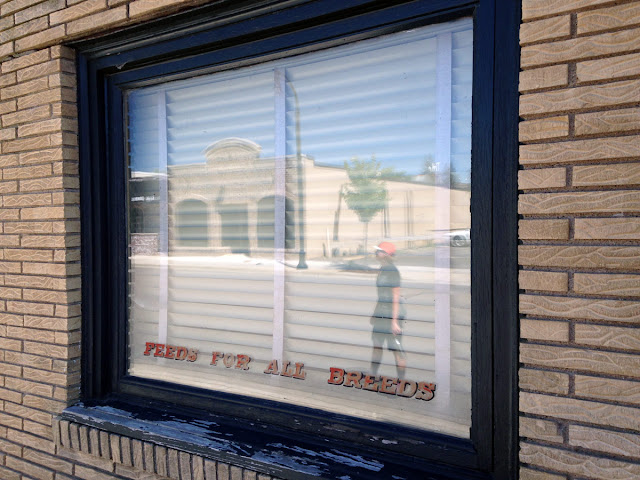




































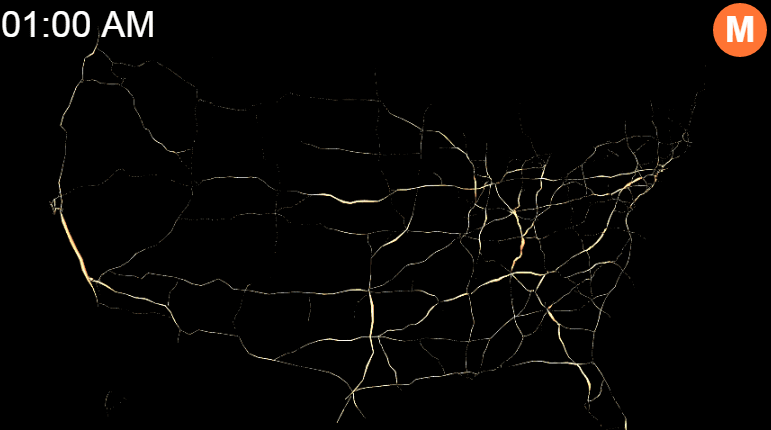



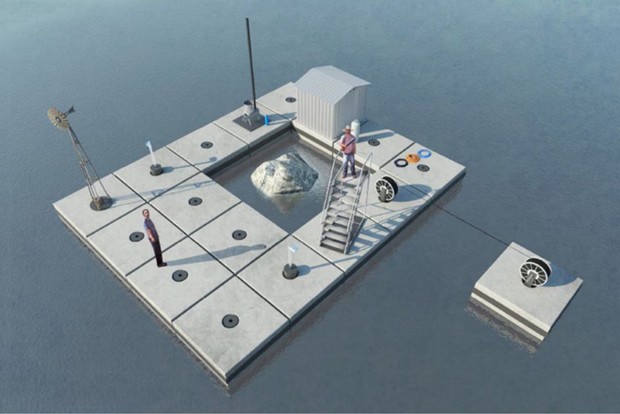




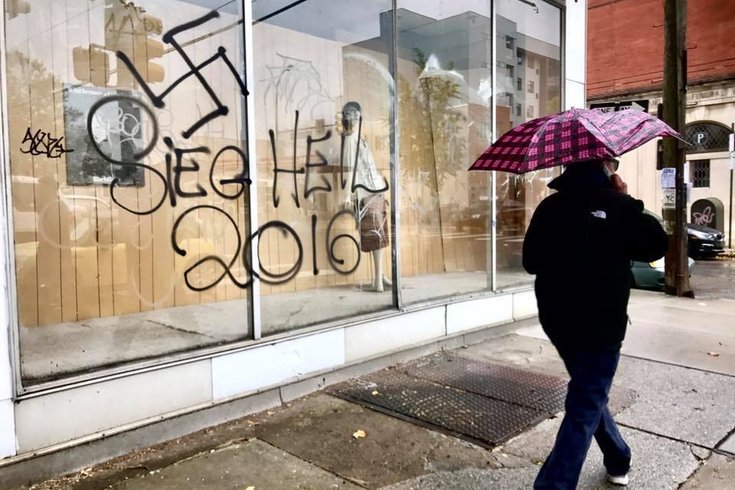

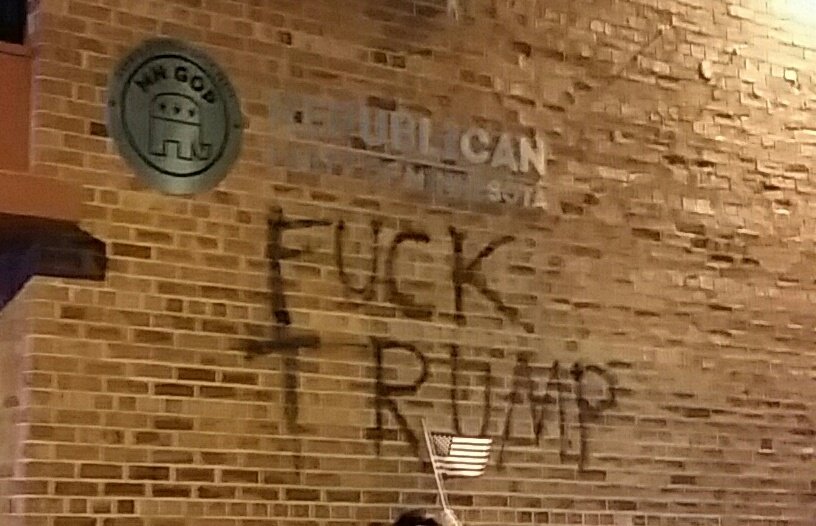



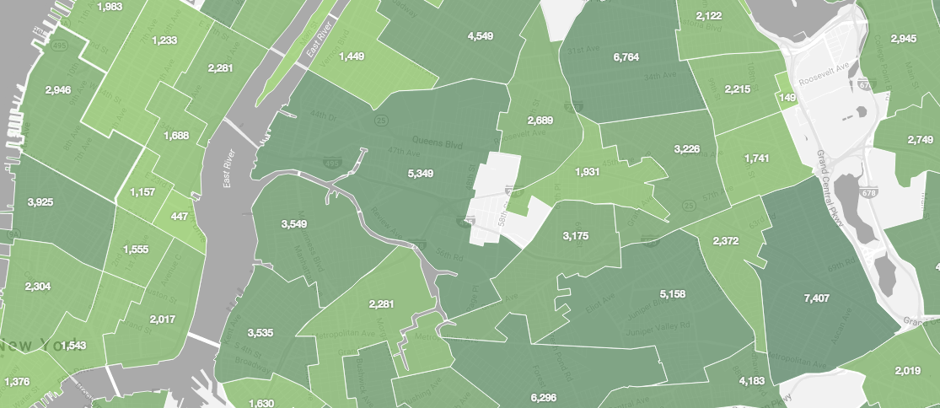
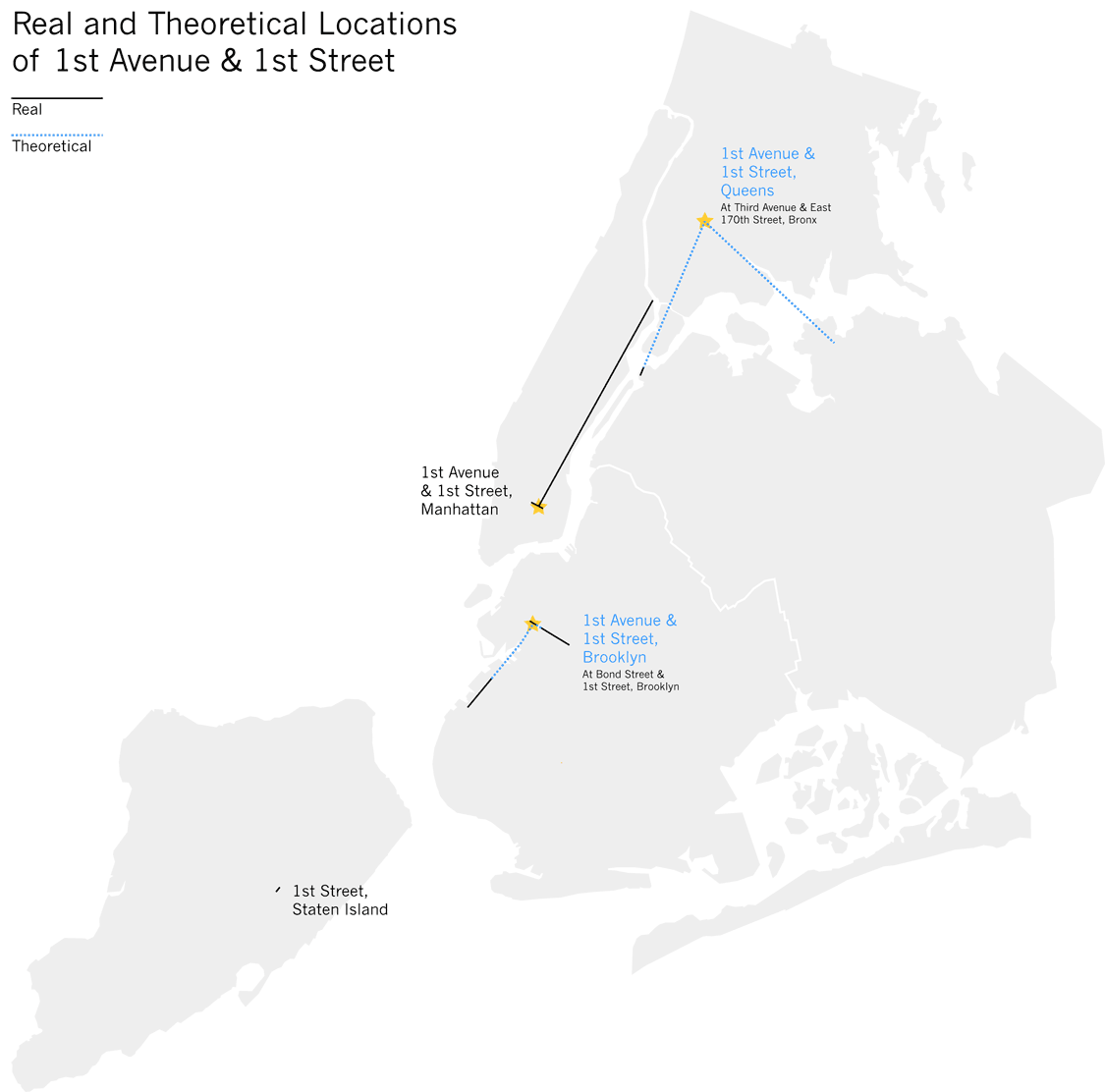



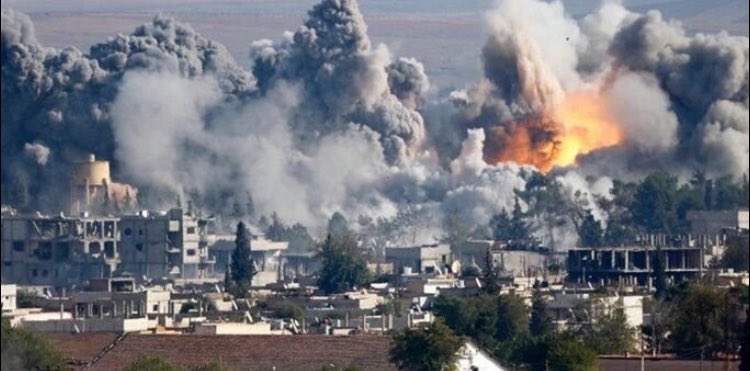
/cdn0.vox-cdn.com/uploads/chorus_asset/file/7429141/philly.jpg)